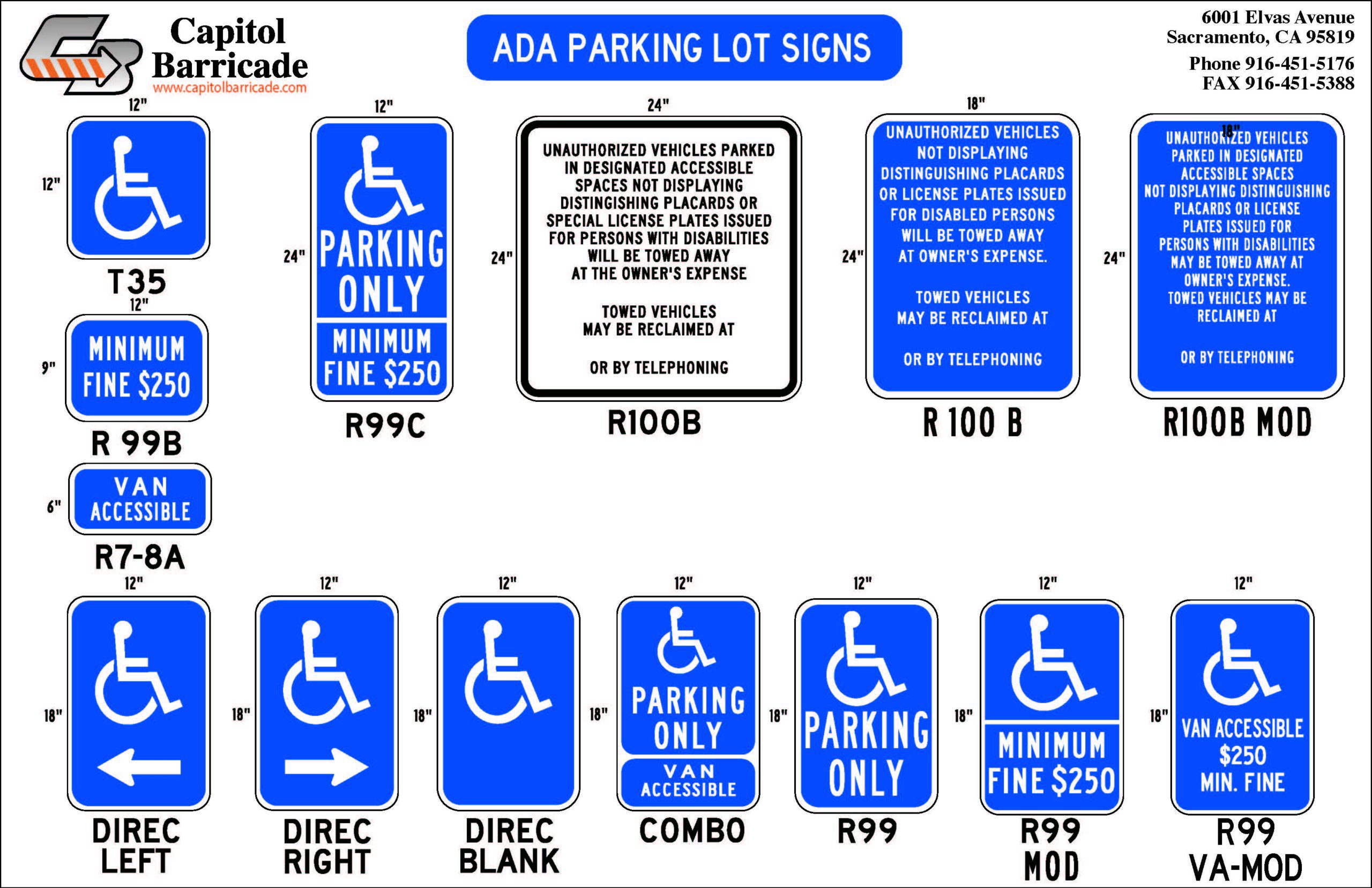Discover the Importance of ADA Signs in Public Spaces
Discover the Importance of ADA Signs in Public Spaces
Blog Article
Checking Out the Secret Features of ADA Indications for Boosted Ease Of Access
In the world of accessibility, ADA indications serve as quiet yet powerful allies, ensuring that rooms are comprehensive and accessible for individuals with impairments. By incorporating Braille and responsive aspects, these signs damage obstacles for the visually impaired, while high-contrast shade schemes and clear typefaces cater to diverse aesthetic needs.
Relevance of ADA Compliance
Guaranteeing compliance with the Americans with Disabilities Act (ADA) is essential for cultivating inclusivity and equal access in public areas and workplaces. The ADA, established in 1990, mandates that all public facilities, employers, and transport services suit people with disabilities, ensuring they enjoy the very same civil liberties and possibilities as others. Conformity with ADA standards not just fulfills legal obligations but also boosts an organization's reputation by showing its dedication to diversity and inclusivity.
Among the vital elements of ADA conformity is the implementation of available signs. ADA signs are made to ensure that individuals with specials needs can conveniently browse via structures and spaces. These indicators should abide by particular guidelines concerning size, font, color comparison, and positioning to assure presence and readability for all. Properly applied ADA signage helps remove obstacles that individuals with disabilities commonly run into, therefore advertising their freedom and self-confidence (ADA Signs).
Additionally, sticking to ADA laws can mitigate the threat of prospective fines and legal repercussions. Organizations that fall short to follow ADA standards may face claims or fines, which can be both damaging and financially troublesome to their public image. Hence, ADA compliance is important to cultivating an equitable environment for everybody.
Braille and Tactile Aspects
The unification of Braille and tactile elements into ADA signs personifies the principles of availability and inclusivity. It is generally put under the corresponding text on signage to guarantee that people can access the info without aesthetic aid.
Responsive components prolong past Braille and include raised symbols and characters. These components are designed to be noticeable by touch, permitting people to recognize area numbers, toilets, leaves, and various other important locations. The ADA sets particular guidelines regarding the size, spacing, and placement of these tactile components to maximize readability and ensure uniformity across various environments.

High-Contrast Color Pattern
High-contrast color design play a crucial duty in boosting the presence and readability of ADA signage for individuals with aesthetic impairments. These systems are important as they optimize the difference in light reflectance in between text and background, making certain that indications are easily discernible, even from a distance. The Americans with Disabilities Act (ADA) mandates the use of certain color contrasts to suit those with restricted vision, making it an essential element of compliance.
The effectiveness of high-contrast shades hinges on their weblink ability to stand out in numerous illumination conditions, consisting of poorly lit settings and locations with glare. Usually, dark message on a light history or light message on a dark history is utilized to attain ideal comparison. Black message on a yellow or white history supplies a stark aesthetic distinction that aids in quick recognition and comprehension.

Legible Fonts and Text Size
When considering the design of ADA signage, the option of clear typefaces and suitable text dimension can not be overemphasized. The Americans with Disabilities Act (ADA) mandates that fonts should be not italic and sans-serif, oblique, manuscript, extremely decorative, or of unusual type.
The size of the message also plays a critical function in accessibility. According to ADA guidelines, the minimal text elevation must be 5/8 inch, and it ought to enhance proportionally with seeing range. This is especially vital in public areas where signage needs to be reviewed swiftly and precisely. Uniformity in text dimension adds to a natural visual experience, aiding individuals in navigating atmospheres successfully.
In addition, spacing in between letters and lines is indispensable to readability. Sufficient spacing stops characters from showing up crowded, enhancing readability. By adhering to these criteria, developers can dramatically improve ease of access, making sure that signs serves its intended function for all people, no matter their visual abilities.
Effective Placement Strategies
Strategic positioning of ADA signage is vital for maximizing access and ensuring compliance with lawful requirements. ADA guidelines stipulate that indicators ought to be placed at a height in between 48 to 60 inches from the ground to guarantee they are within the line of view for both standing and seated individuals.
Furthermore, indicators must go to this site be positioned surrounding to the lock side of doors to allow simple identification prior to entrance. This placement aids individuals find areas and areas without blockage. In situations where there is no door, indicators must be positioned on the closest adjacent wall surface. Consistency in sign positioning throughout a facility enhances predictability, reducing complication and enhancing total individual experience.

Conclusion
ADA indicators play an essential role in advertising accessibility by integrating features that resolve the needs of people with disabilities. These components jointly cultivate a comprehensive setting, emphasizing the relevance of ADA conformity in making certain equivalent accessibility for all.
In the world of availability, ADA Check Out Your URL indications serve as quiet yet effective allies, making sure that spaces are inclusive and accessible for people with handicaps. The ADA, passed in 1990, mandates that all public centers, employers, and transportation solutions fit people with specials needs, ensuring they enjoy the very same legal rights and chances as others. ADA Signs. ADA signs are designed to make sure that people with handicaps can easily navigate with structures and rooms. ADA standards stipulate that indicators ought to be mounted at an elevation between 48 to 60 inches from the ground to guarantee they are within the line of sight for both standing and seated people.ADA signs play an essential function in advertising availability by integrating attributes that address the needs of people with impairments
Report this page